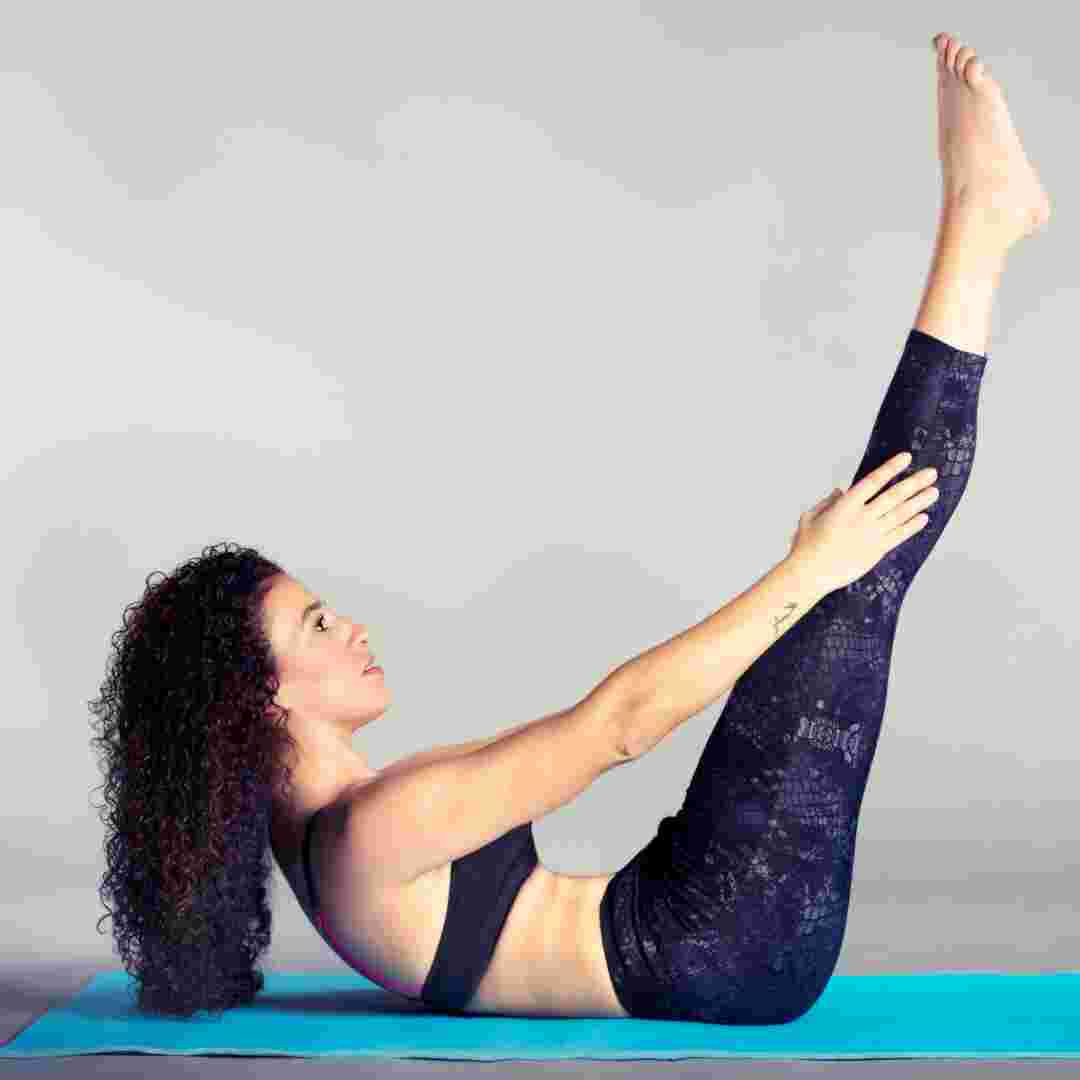Table of Contents
Introduction
5 Lower Back Pain-Relieving Pilates Exercises
Pilates' Lower Back Pain Benefits
Lower Back Pain Pilates Modifications
Q&A
Conclusion
"Consult a healthcare professional before starting any exercise programme with lower back pain."
Introduction
Before starting an exercise programme, visit a doctor if you have lower back pain. They can advise if Pilates is safe for your situation.
5 Lower Back Pain-Relieving Pilates Exercises
Pilates improves core strength, flexibility, and body alignment. You may be asking if Pilates is safe and useful for lower back discomfort. Yes, with safeguards.
Before starting any new fitness programme, especially if you have lower back pain, check your doctor or physical therapist. They can advise you on whether Pilates is right for you and which exercises to avoid.
If your doctor approves, here are five Pilates exercises for lower back pain:
Pelvic tilt
Pelvic tilts gently mobilise the lower back and pelvis. Lay on your back with bent knees and flat feet. Exhale and tilt your pelvis towards your belly button to flatten your lower back. Repeat for 10-15 breaths.
2. Bridge
Bridging strengthens glutes, hamstrings, and the lower back. Start in the pelvic tilt position, but elevate your hips towards the ceiling. Hold briefly, then lower. 10-15 times.
Spine Stretch
Sitting spine stretches lower back and hamstring muscles. Sit on the floor with your legs straight in front of you and your arms reaching your toes. Inhale to prepare, then exhale as you reach forward. Repeat for 10-15 breaths.
Side-lying leg lifts
Side-lying leg raises strengthen hip abductors, stabilising the pelvis and reducing lower back pain. Lie sideways with your bottom leg bent and your upper leg straight. Lift your upper leg towards the ceiling with your hips stacked and core engaged. Lower and repeat 10-15 times per side.
5. Cat-Cow
The cat-cow stretch relaxes the spine and lower back. Start on hands and knees with wrists under shoulders and knees under hips. Inhale and elevate your head and tailbone in cow stance. Cat pose: exhale and circle your spine. 10-15 times.
In conclusion, Pilates can be a safe and beneficial workout for lower back pain, but check your doctor and alter techniques as needed. The five exercises above improve core and hip muscles, increase spine mobility, and reduce lower back discomfort. Pilates may enhance your health and lower back problems.
Pilates' Lower Back Pain Benefits
Pilates has become popular due to its many benefits. This low-impact workout strengthens core muscles, improves flexibility, and raises body awareness. However, lower back pain sufferers wonder if Pilates is safe and beneficial. This article discusses Pilates' lower back pain management benefits.
First, Pilates strengthens core muscles, which helps lower back pain sufferers. Core muscles are abdominal, back, and pelvic. These muscles assist the spine and posture. Weak muscles cause lower back pain. Pilates strengthens and stabilises these muscles, relieving back pain.
Pilates is low-impact and joint-friendly. High-impact exercises might worsen lower back pain. Pilates emphasises form and alignment. This reduces damage and lower back pain.
Thirdly, Pilates can enhance flexibility and lower back discomfort. Pilates can loosen tight muscles that cause lower back pain. This reduces lower back stress and improves flexibility.
Fourthly, Pilates can promote body awareness, helping people with lower back pain understand their bodies and how they move. This can reveal areas of weakness or stress that Pilates can correct. Body awareness can also help people maintain good posture, reducing lower back pain.
Finally, lower back pain sufferers can customise Pilates. Pilates routines can be adjusted for fitness and flexibility. Lower back pain sufferers can start with moderate exercises and advance to harder ones as their strength and flexibility improve.
Pilates is a safe and effective lower back pain exercise. It improves flexibility, core strength, and body awareness. Low-impact Pilates can be customised for lower back pain sufferers. Before starting any new fitness programme, especially if you have lower back pain, visit a doctor. Pilates can help lower back discomfort with adequate instruction.
Lower Back Pain Pilates Modifications
Pilates improves core strength, flexibility, and body awareness. Lower back pain sufferers may find Pilates intimidating. Lower back pain sufferers can benefit from Pilates by adapting it to their condition.
Consult a doctor before commencing any fitness programme to guarantee safety. Certain actions can worsen lower back pain. You can alter Pilates exercises after getting medical permission.
Start by focusing on your breathing. Proper breathing reduces lower back strain and relaxes. Inhale deeply and exhale slowly throughout Pilates. This engages core muscles and stabilises your spine, lowering injury risk.
Use pillows or blocks to support yourself while exercising. A pillow under your lower back can support your spine during the Pilates roll-up. For the Pilates bridge, insert a block between your knees to activate your inner thighs and relieve lower back pain.
Pilates requires appropriate form and alignment. Avoid excessive arching and rounding by keeping your spine neutral. Stop exercising if it hurts and see a doctor.
Focusing on core muscle strengthening without stressing the lower back is one of the best adaptations for lower back pain. The Pilates hundred involves lying on your back and elevating your head and shoulders while pumping your arms. This core-building exercise supports the lower back.
The Pilates plank and Pilates side plank, which entail balancing on one arm and strengthening the core and oblique muscles, are also beneficial lower back pain exercises. These exercises strengthen core muscles and promote body awareness, lowering injury risk and improving posture.
Pilates is a safe and effective exercise for lower back discomfort. Modifying workouts and focusing on form and alignment can develop your core muscles, improve flexibility, and reduce injury risk. Before commencing any fitness programme, visit your doctor and listen to your body to prevent aggravating your illness. Pilates might be beneficial to your lower back with the appropriate adaptations and patience.

Q&A
1. Is Pilates safe for lower back pain?
Depends on lower back pain intensity. Pilates should be started after consulting a doctor.
2. Does Pilates ease lower back pain?
Pilates strengthens core muscles, improves posture, and increases flexibility, relieving lower back discomfort.
3. How should I modify my Pilates practise for lower back pain?
Avoid lower back-paining exercises. Use pillows or blocks for support, avoid forward flexion, and focus on core muscle strengthening.
Conclusion
Conclusion: If you have lower back discomfort and work with a trained instructor who can adapt routines, Pilates is safe. Before starting any new fitness programme, especially if you have back discomfort or injury, contact with your doctor or physical therapist. They can help you decide if Pilates is right for you and how to safely include it into your treatment plan.


